Kapilas Bhuyan
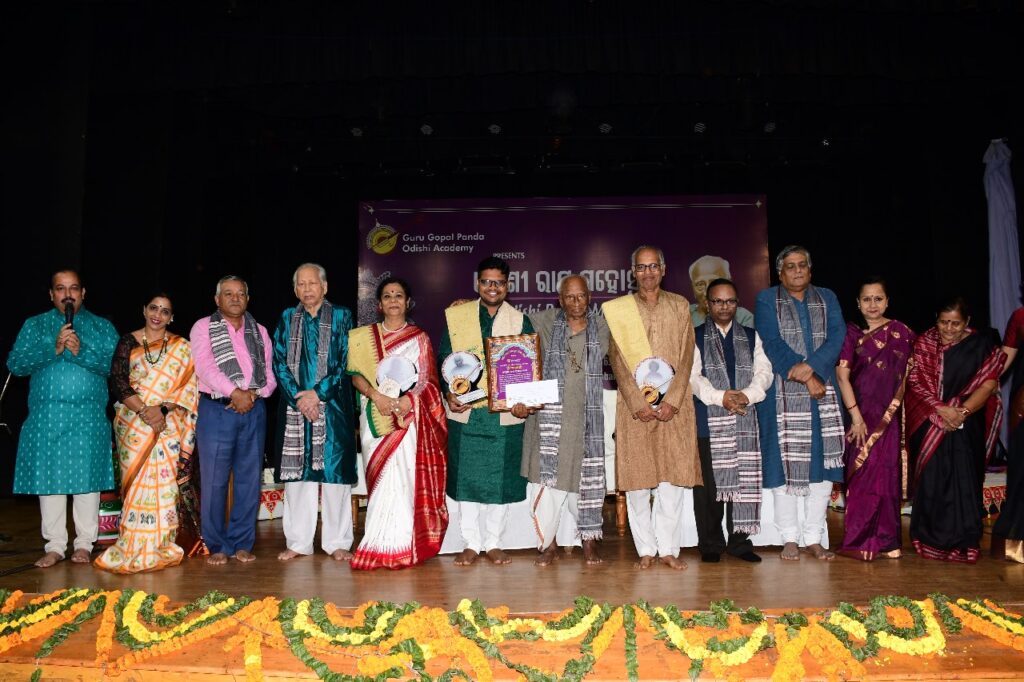
A question often asked – while Odissi dance is considered one of the classical dances of India, how could the dance tuned to the music cannot be classical? It has been over last half-century no one has an answer to it.
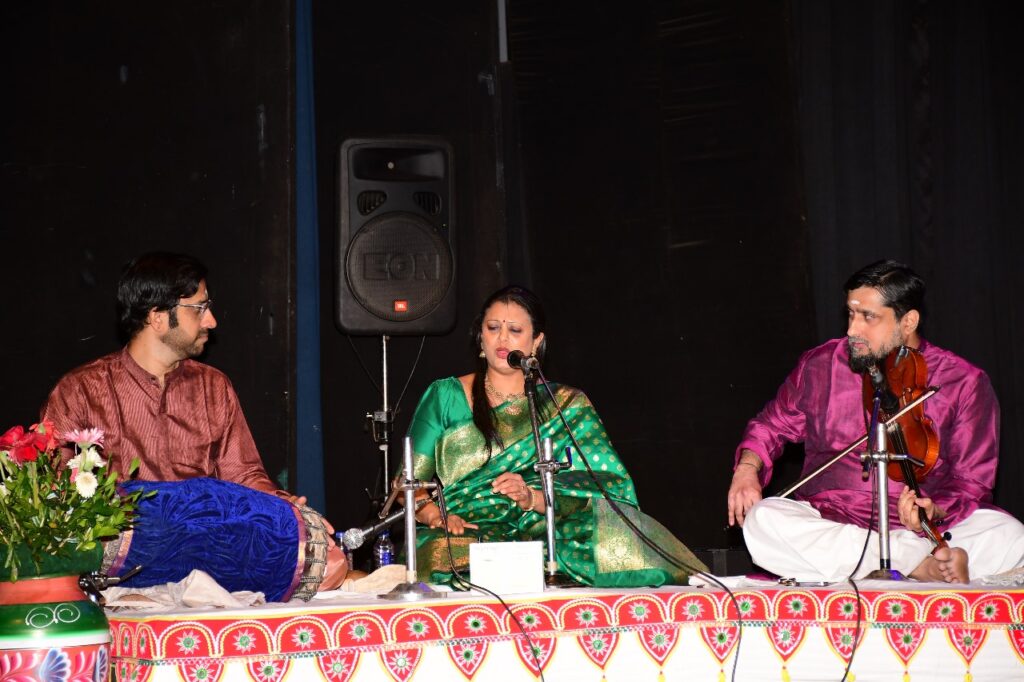
We all know about the Hindustani and Carnataki singing styles in India as two distinctly different classical music traditions of the country. However, despite the distinctly different entity of its own, Odishi singing style has not been considered one! The only reason that everyone is aware of that there has not been enough practice tradition, and unlike the other two, the practice is limited toa small geographical area of Odisha and the separated part of it in Saraikela and Kharaswan of West-Singhbhum district of erstwhile Bihar state, now in Jharkhand. So, most people of this country don’t know about its existence despite the singing style has rich tradition and heritage.
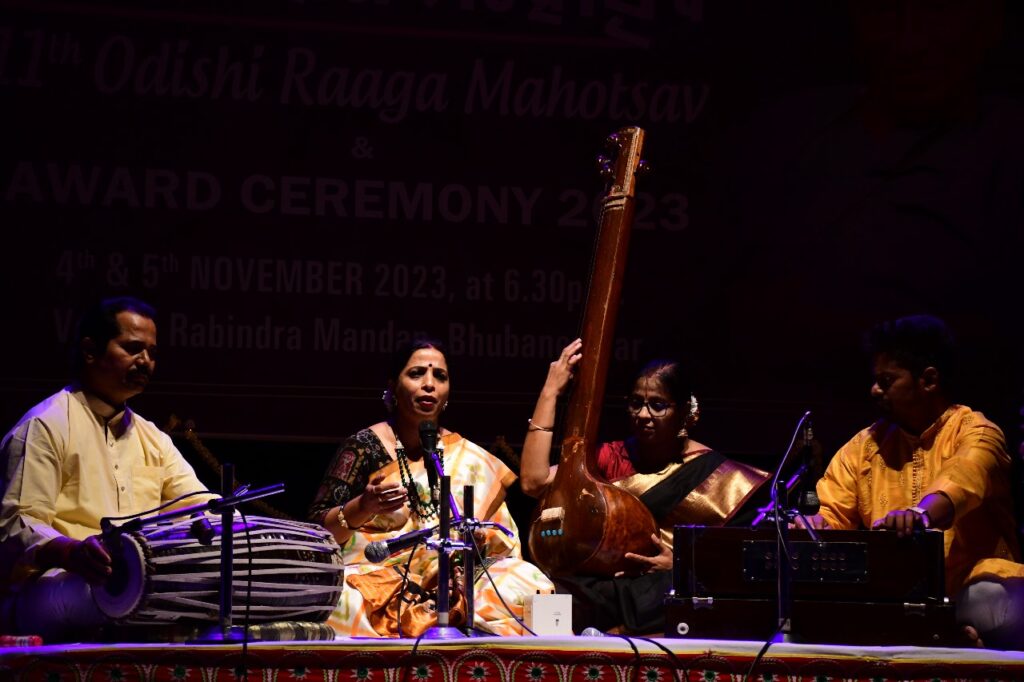
However, Guru Gopal Chandra Panda, the doyen of Odishi music style has been working incessantly to get the identity of Odishi music and the rich heritage of its own Raagamala through his lifetime. An outfit named after him called Guru Gopal Panda Odishi Academy (GGPOA) led by his daughter Guru Sangita Panda, has been working towards achieving this goal over a decade.
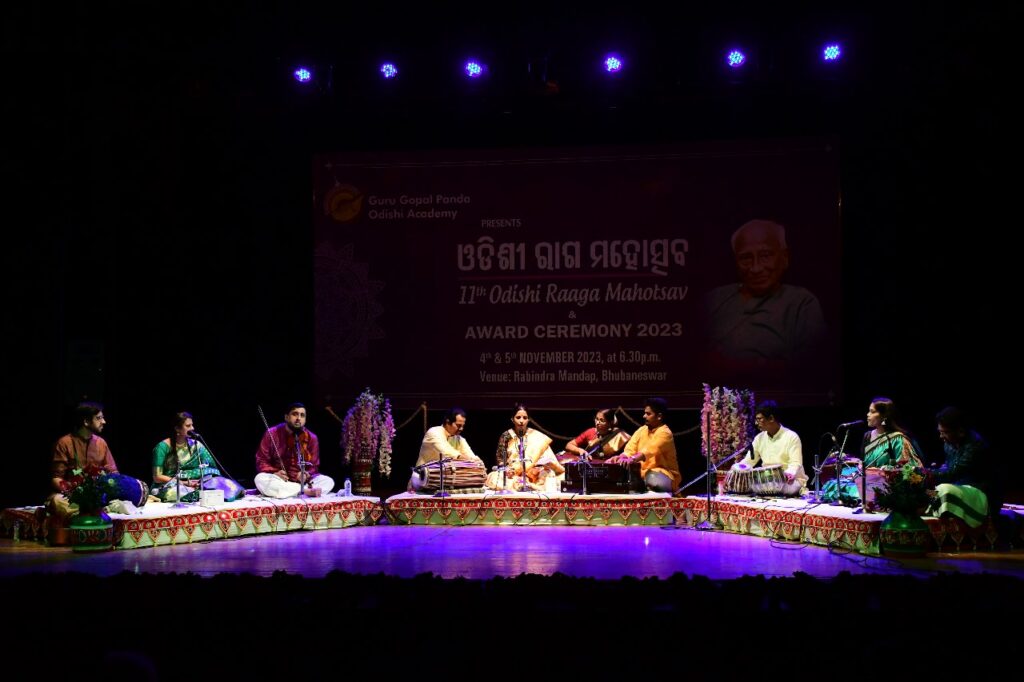
On 4th and 5th November, under the aegis of GGPOA, was organized the 11th Odishi Raaga Mahotsab in the graceful presence of Guru Gopal Panda at Rabindra Mandap, Bhubaneswar. Multiple awards were given to individuals who have been devoted themselves for Odishi dance and music. Whereas the septuagenarian Veenakar and musicologist Guru K Ramarao Patra was warded with Guru Singhari Samman for his lifetime dedication, Guru Sikata Das and Matru Prasad Das were awarded with Bhagawati Smruti Samman and Guru Gopal Panda Yuva Prativa Samman respectively for their devotion to the field of Odishi dance and vocal singing.
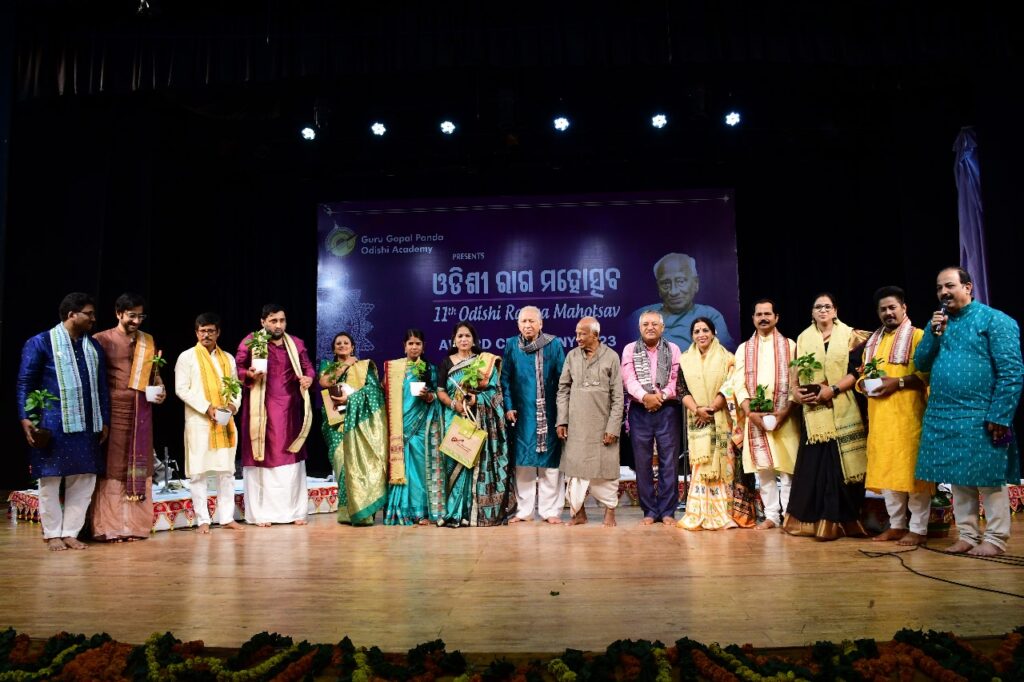
The most attractive part of this two-day Raaga Mahotsava was its closing recital – A Classical Trio, an attempt to recite Carnataki, Hindustani and Odishi side by side so as to establish, both the distinctiveness of the Raagas and Gayakis of the three classical streams of music of India. The participating vocalists were Vidushi Vidya Harikrishnan in Carnataki, Vidushi Laxmipriya Nayak in Hidustani and Vidushi Sangita Panda herself in Odishi styles.
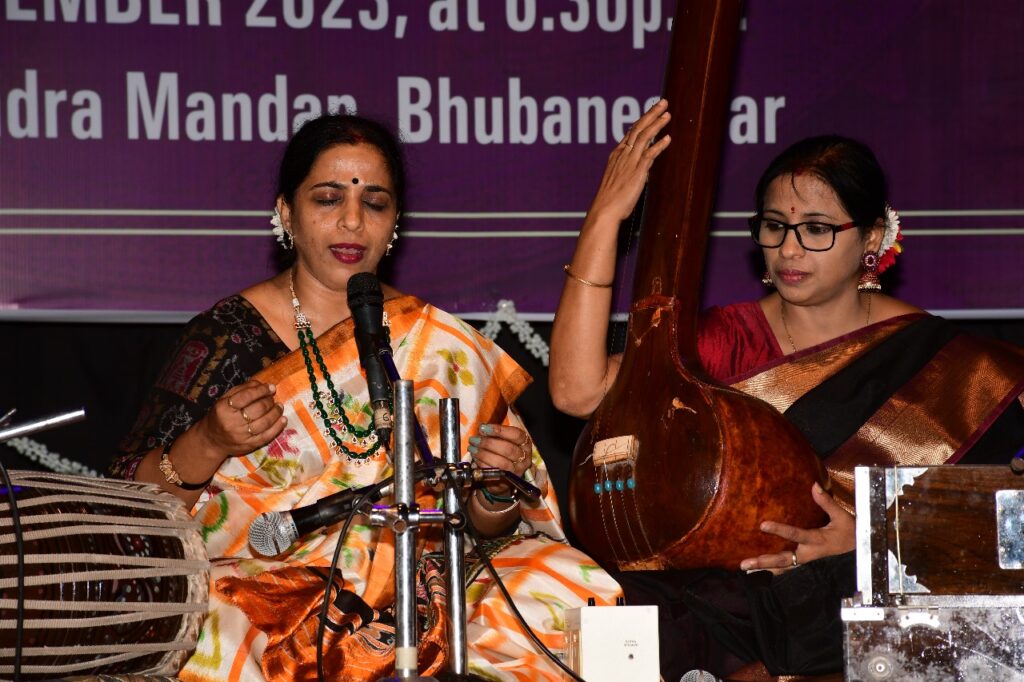
The recitations started with Vidushi Laxmipriya Nayak with her presentation in Raaga Madhuwanri, followed by Vidushi Vidya Harikrishnan with Raaga Dhumabati, and finally by Vidushi Sangita Panda in Raaga Punnaga Baradi of Odishi Classical Music. The interesting aspect was that the different Raagas are actually the same, but titled differently in the three classical styles. Thus, the presentation could establish the fact that the Odishi Classical Singing is comparatively as equal as the other two. Finally, all of them presented the Stuti Manjari together based on the Odishi Raaga Kamod.
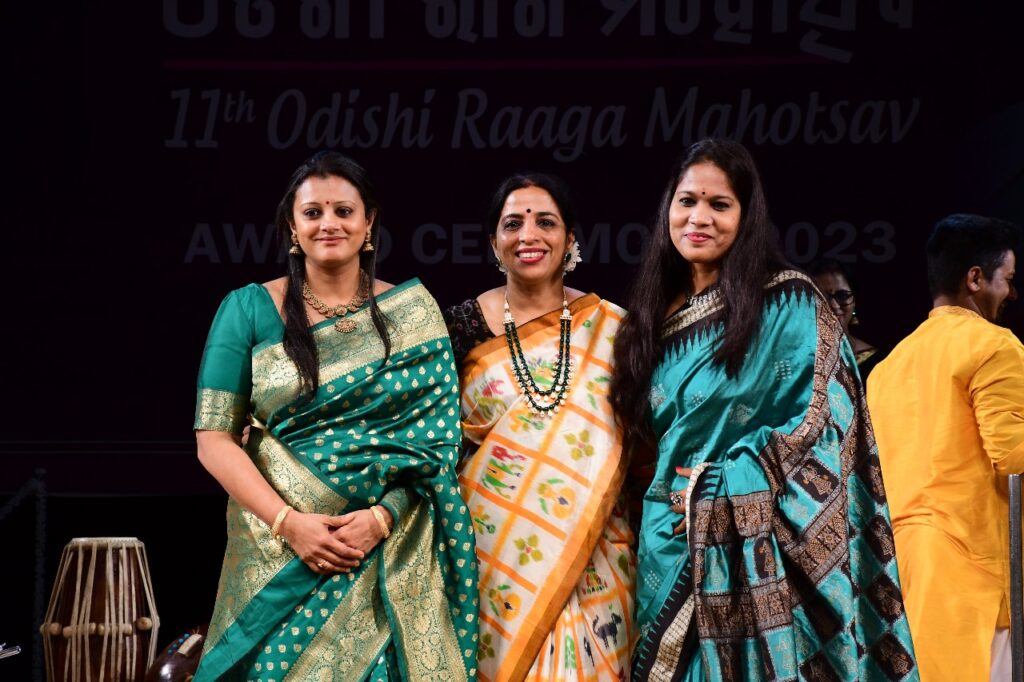
It was indeed an enthralling experience to witness the recitals in the three classical singing styles and finding Odishi singing as rich as the other two. “Our attempt has been over last one decade to claim our equal classical status with Carnataki and Hindustani singing styles, and that has now started drawing attention from all around the country is no doubt an exciting moment for all of us”, says Vidushi Sangita Panda, the CEO of the academy.
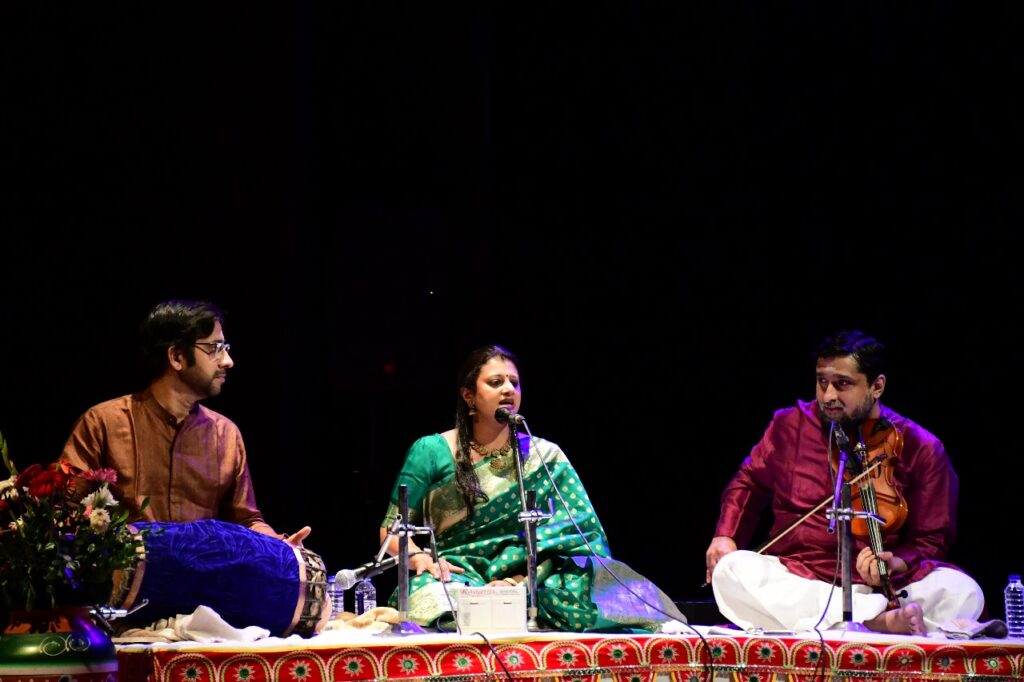
(The author is a Senior Journalist and National Award-winning Filmmaker. Opinions are personal.)





















